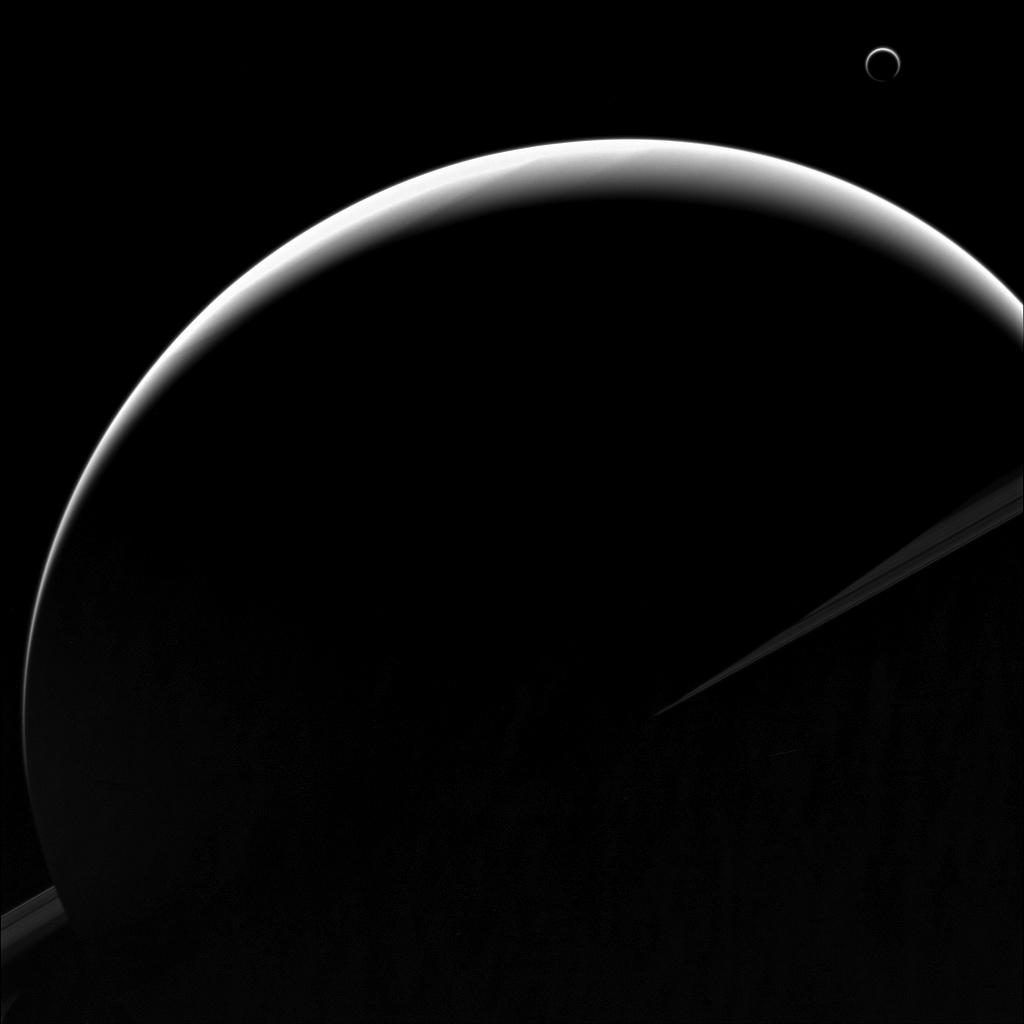Mimicking the Moon

| PIA Number | PIA18291 |
|---|---|
| Language |
|
When Galileo first observed Venus displaying a crescent phase, he excitedly wrote to Kepler (in anagram) of Venus mimicking the moon-goddess. He would have been delirious with joy to see Saturn and Titan, seen in this image, doing the same thing.
More than just pretty pictures, high-phase observations - taken looking generally toward the Sun, as in this image - are very powerful scientifically since the way atmospheres and rings transmit sunlight is often diagnostic of compositions and physical states. In this example, Titan's crescent nearly encircles its disk due to the small haze particles high in its atmosphere scattering the incoming light of the distant Sun.
This view looks toward the sunlit side of the rings from about 3 degrees above the ringplane. The image was taken in violet light with the Cassini spacecraft wide-angle camera on Aug. 11, 2013.
The view was obtained at a distance of approximately 1.1 million miles (1.7 million kilometers) from Saturn and at a Sun-Saturn-spacecraft, or phase, angle of 154 degrees. Image scale is 64 miles (103 kilometers) per pixel.
The Cassini-Huygens mission is a cooperative project of NASA, the European Space Agency and the Italian Space Agency. The Jet Propulsion Laboratory, a division of the California Institute of Technology in Pasadena, manages the mission for NASA's Science Mission Directorate, Washington, D.C. The Cassini orbiter and its two onboard cameras were designed, developed and assembled at JPL. The imaging operations center is based at the Space Science Institute in Boulder, Colo.
For more information about the Cassini-Huygens mission visit http://saturn.jpl.nasa.gov or http://www.nasa.gov/cassini . The Cassini imaging team homepage is at http://ciclops.org .
Credit: NASA/JPL-Caltech/Space Science Institute
